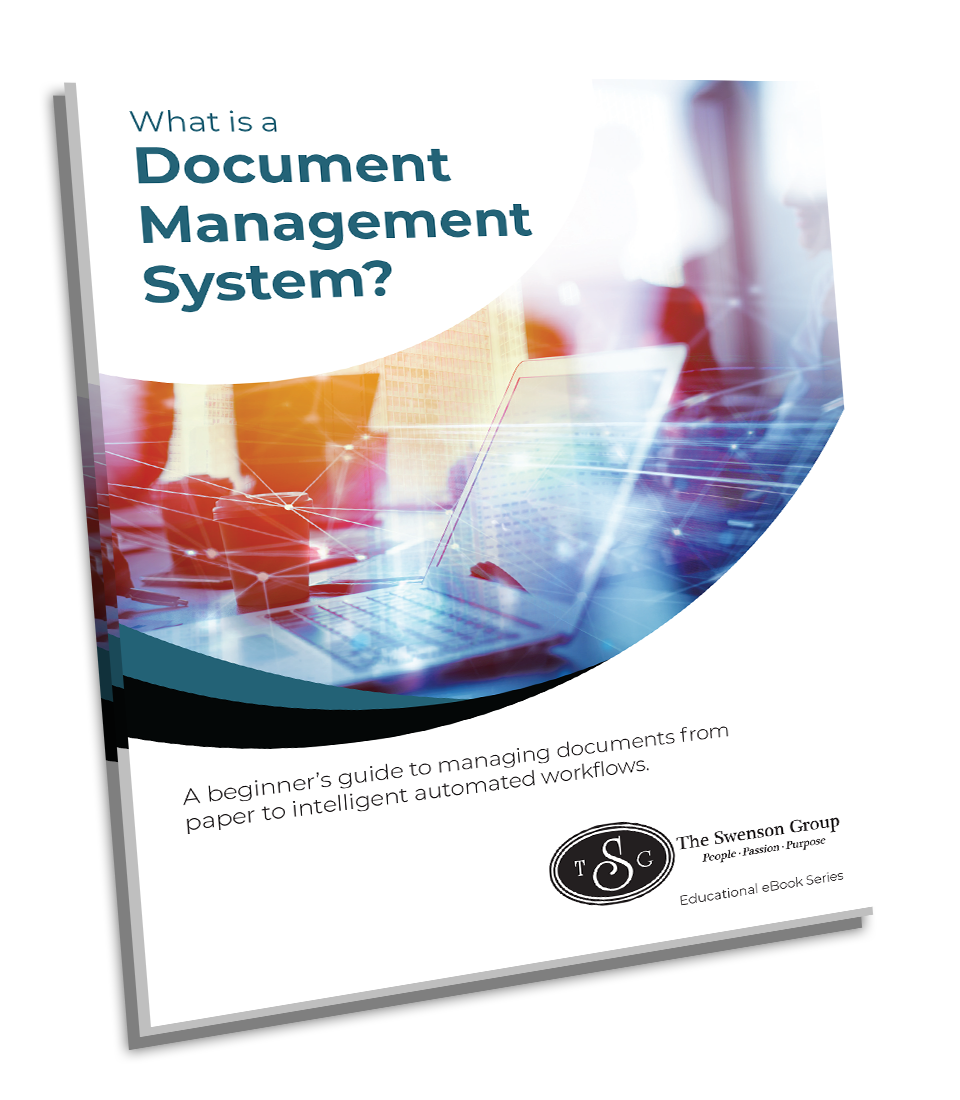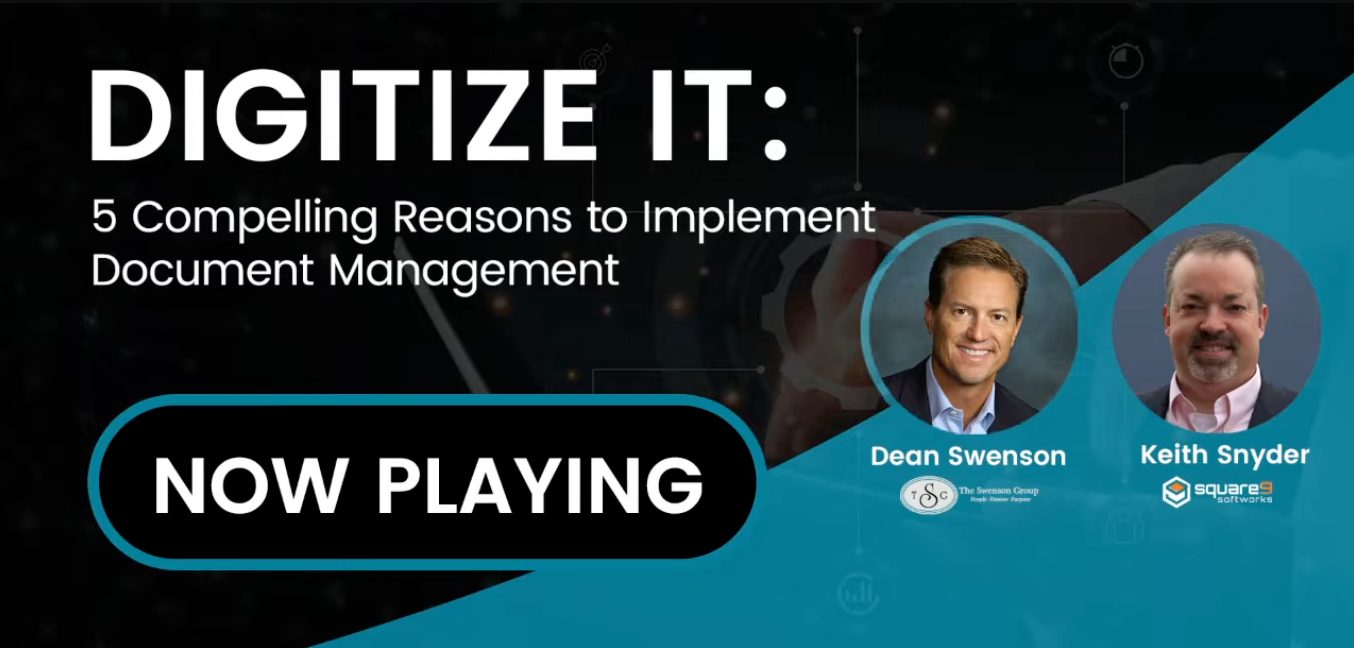Paper has a way of slowing things down. It clutters desks, stalls approvals, and gets in the way of teams trying to make progress. For finance, IT, HR, and operations leaders, these aren’t just everyday annoyances; they disrupt entire workflows, slow decision-making, and create frustrating bottlenecks where momentum should be.
Even businesses that consider themselves tech-forward often still rely on paper for critical tasks like invoice approvals, onboarding, and contract management. Even though these paper-based workflows might feel familiar, they stall progress and make it harder for teams to respond quickly or adapt.
AI-powered automation offers a smarter, faster way forward. By transforming paper-heavy processes into intelligent digital workflows, businesses can reduce costs, reclaim time, and refocus their teams on the work that truly moves the needle.
The Hidden Cost of Paper Processes
Paper might seem harmless, until it becomes the reason a payment is late, a contract is lost, or a key hire is delayed. The cumulative toll on your business can be significant.
Approval workflows get stuck when a signature is buried on someone’s desk. Audits turn into fire drills because the right records aren’t easy to retrieve. Collaboration suffers when teams are forced to pass documents around manually, often duplicating effort along the way.
Manually entering data from printed forms or invoices invites mistakes: incorrect amounts, typos, or missing information. Without a centralized way to track document versions or ownership, it’s easy for things to slip through the cracks.
Paper also introduces security and compliance risks. Regulated industries need clear documentation trails, but paper is harder to track, easier to misplace, and more vulnerable to unauthorized access. Add the costs of printing, storage, and shredding, and it becomes clear: holding onto paper processes may be costing far more than it seems.
Where Paper Hurts Most: Key Departments at Risk
While almost every department touches paper in some form, a few areas feel the strain more acutely.
Accounts Payable often struggles with lost or delayed invoices, manual approvals, and difficulty ensuring compliance with company policies. These slowdowns can strain vendor relationships and distort financial reporting.
Human Resources deals with new hire paperwork, benefits forms, and performance reviews: much of it on paper. When processes are slow or incomplete, the employee experience suffers.
Contracts Management is especially vulnerable to error when documents aren’t tracked or stored consistently. A misplaced contract or missed renewal date can lead to financial penalties or strained partnerships.
Operations teams face similar issues. Disconnected systems and siloed information make it hard to maintain momentum. When simple tasks become overly complicated, everyone feels it.
From Overload to Organization: How AI Changes the Game
AI changes how information is handled from the moment it enters your system.
With smart capture, AI can recognize and extract key information from both scanned paper and digital files. It identifies the type of document (an invoice, a resume, a contract), pulls out the relevant details, and tags it automatically with metadata like vendor name, date, or document type. That makes retrieval effortless. Instead of clicking through nested folders or rifling through filing cabinets, users can search by keyword, category, or workflow status and find what they need instantly.
Perhaps most valuable, AI helps create unified systems. It understands where a document belongs, whether it’s destined for your accounting platform, CRM, or HR software, and routes it there automatically. No more guessing which system to use or creating duplicates in multiple places.
Instead of spending time organizing files, your team gets to focus on using the information: an important shift for any department.
Automating the Workflow: Goodbye Bottlenecks
Bottlenecks rarely appear out of nowhere. They form slowly, when manual steps build up over time: someone forgets to pass along a form, a document sits waiting for approval, an email goes unnoticed.
AI automation helps smooth out these wrinkles by routing documents automatically based on their content, type, or urgency. An invoice is assigned to the right budget owner. A contract is flagged for legal review. A time-off request is delivered to HR, all without anyone needing to forward or follow up.
This also means no more duplicate entry. Data captured once can be pushed to multiple systems simultaneously. A single scanned invoice might feed your ERP, trigger a payment process, and update vendor records, all in the background.
With real-time visibility, everyone stays aligned. Dashboards show what’s pending, approved, or overdue. Notifications prompt action when needed. Managers aren’t left in the dark, and employees don’t need to check in constantly for status updates.
Instead of chasing paper trails, teams can keep work moving and do it with confidence.
Security, Compliance, and Audit-Readiness
When critical documents live in physical folders or scattered digital drives, maintaining security and meeting compliance standards becomes a challenge. AI-enhanced document systems offer a better approach.
Role-based access controls ensure only authorized users can view or edit certain files. Sensitive data like employee information, vendor bank details, or health records is encrypted both in transit and at rest.
Audit trails automatically track every action: who opened a document, when it was modified, and what changes were made. This kind of transparency simplifies regulatory reporting and gives you peace of mind when facing audits.
Whether your business needs to comply with GDPR, HIPAA, SOC 2, or other standards, AI-powered document management helps you enforce policies consistently, document your controls, and reduce the risk of accidental exposure.
Security doesn’t have to be a barrier to speed. In fact, the right system makes your workflows both safer and more streamlined.
Collaboration in a Remote and Hybrid World
Teams are no longer always in the same room, or even the same city. Yet they still need to review, edit, and approve documents together, without delays.
AI-powered systems support cloud-based access, so team members can securely retrieve documents from anywhere, on any device. Whether someone is at home, in a satellite office, or traveling, work can continue uninterrupted.
Version control and real-time collaboration features mean everyone works from the same source. You don’t end up with three different “final” versions of a contract, each with slightly different changes. Comments and updates are tracked in one place, keeping the conversation clear and productive.
Cross-departmental projects like onboarding, budgeting, or vendor management benefit most. With shared access and visibility, collaboration improves, and fewer things fall through the cracks.
Growing Smarter, Not Slower
A growing business needs systems that grow with it. AI-powered automation is built for adaptability. It allows you to expand workflows as your needs change, without overhauling the entire system. Whether you’re adding new departments, launching new products, or expanding to new markets, your document processes can keep pace.
These tools also integrate with platforms you already use like ERP, CRM, HRIS, making them easier to adopt and manage. Data flows between systems, eliminating silos and reducing the need for manual updates.
And because automation is configurable, you can refine and evolve your processes over time. What starts as a solution for Accounts Payable today can be expanded to HR or Contracts Management tomorrow.
Real-World Impact: What Businesses Gain
Replacing paper processes with AI automation has ripple effects across the organization.
Approvals move faster. Errors drop. Teams spend less time on repetitive tasks and more time on meaningful work. Employees feel less frustration. Customers get faster, more consistent service. Leaders gain visibility and control.
And while the immediate savings in time and money are easy to measure, the long-term gains in productivity, morale, and agility are just as valuable.
Ready to Break Free from Paper?
If your team is still buried in stacks of paper or navigating slow, manual workflows, now is the time to ask: What would change if we removed those roadblocks? Start by pinpointing where work tends to stall: whether it’s in Accounts Payable, HR, Contracts, or daily approvals. These are often the areas where automation and AI can have the biggest impact, reducing delays, minimizing manual entry, and freeing up your team’s time for higher-value work.
You don’t have to overhaul everything overnight. Begin with one process, evaluate what’s slowing it down, and explore how AI-powered tools can help you move forward faster, with more clarity, more control, and fewer paper trails holding you back.
Watch our feature webinar on-demand for an exclusive tour of document management best practices and learn how AI helps you work smarter, faster, and more securely from the office or remote workplaces.
About TSG
The Swenson Group (TSG) is an award-winning Bay Area Managed Service Provider that has helped thousands of organizations achieve more by leveraging cost effective technologies to be more productive, secure and cost effective. Services include Managed Print, Document Management, IT Services and VoIP. Products include MFPs, Copiers, Printers and Production Systems, Software and Solution Apps. For the latest industry trends and technology insights visit TSG’s main Blog page.
Subscribe to our Blog
What is a Document Management System?
A beginner's guide to managing documents from paper to intelligent automated workflows.












